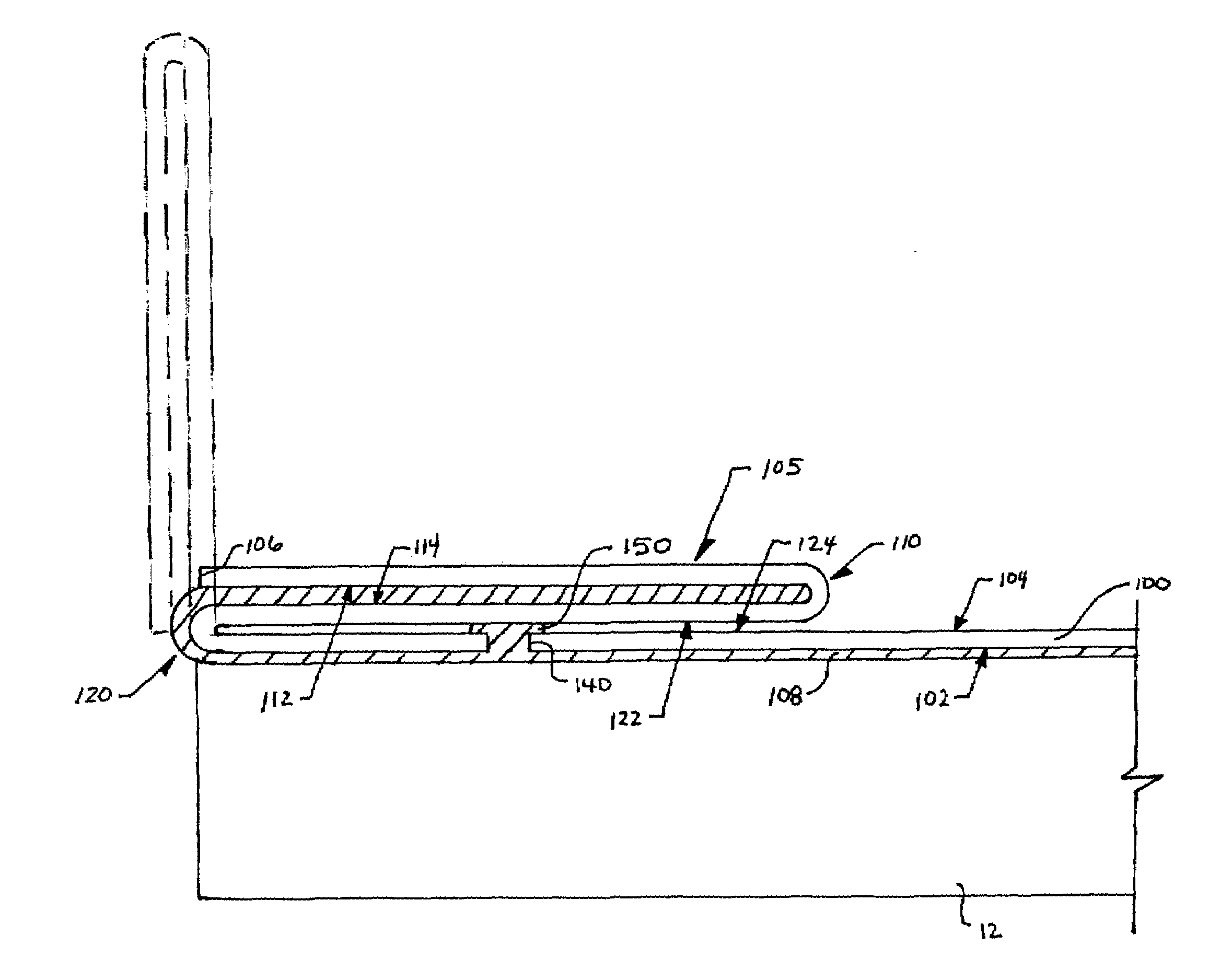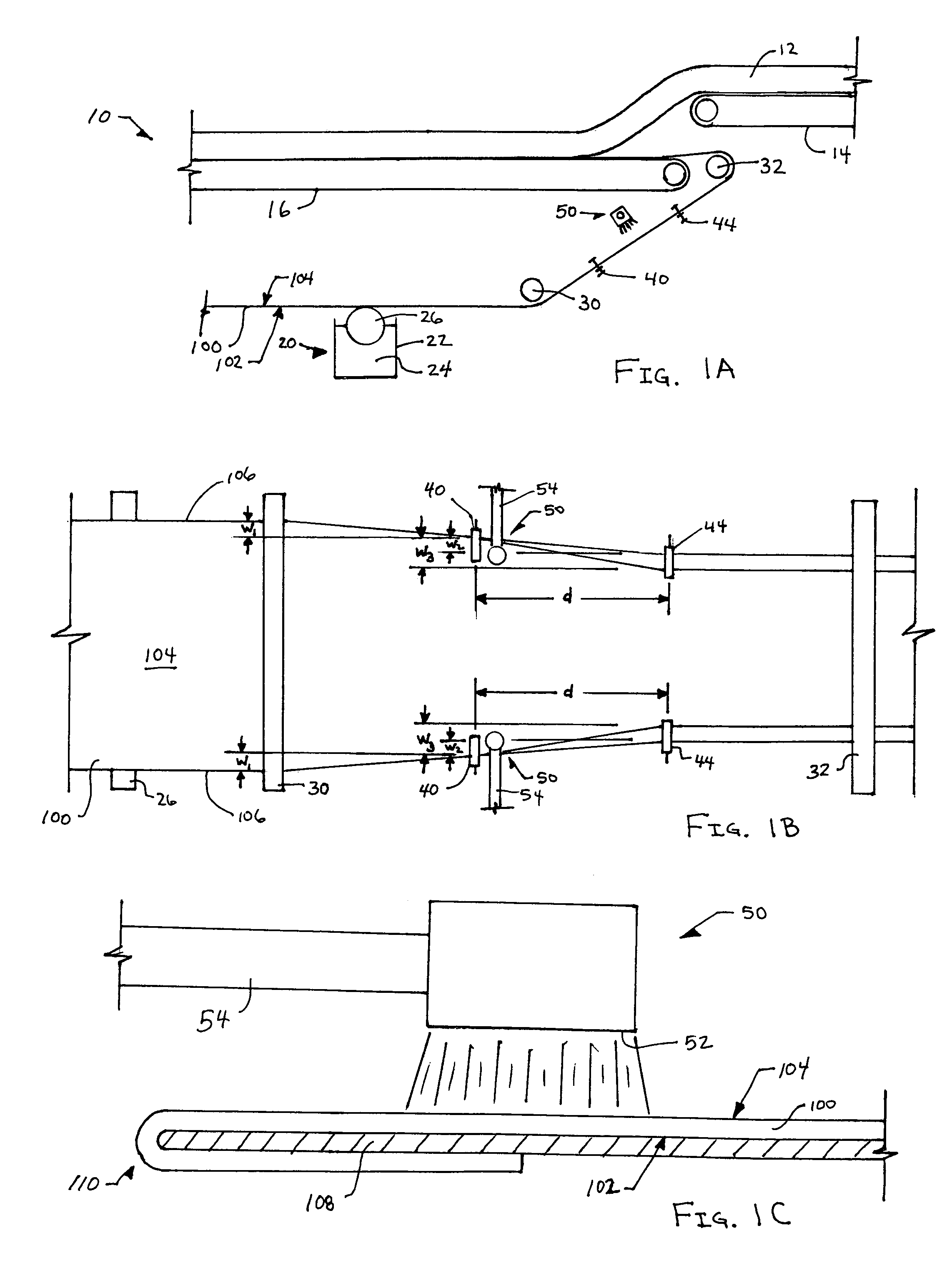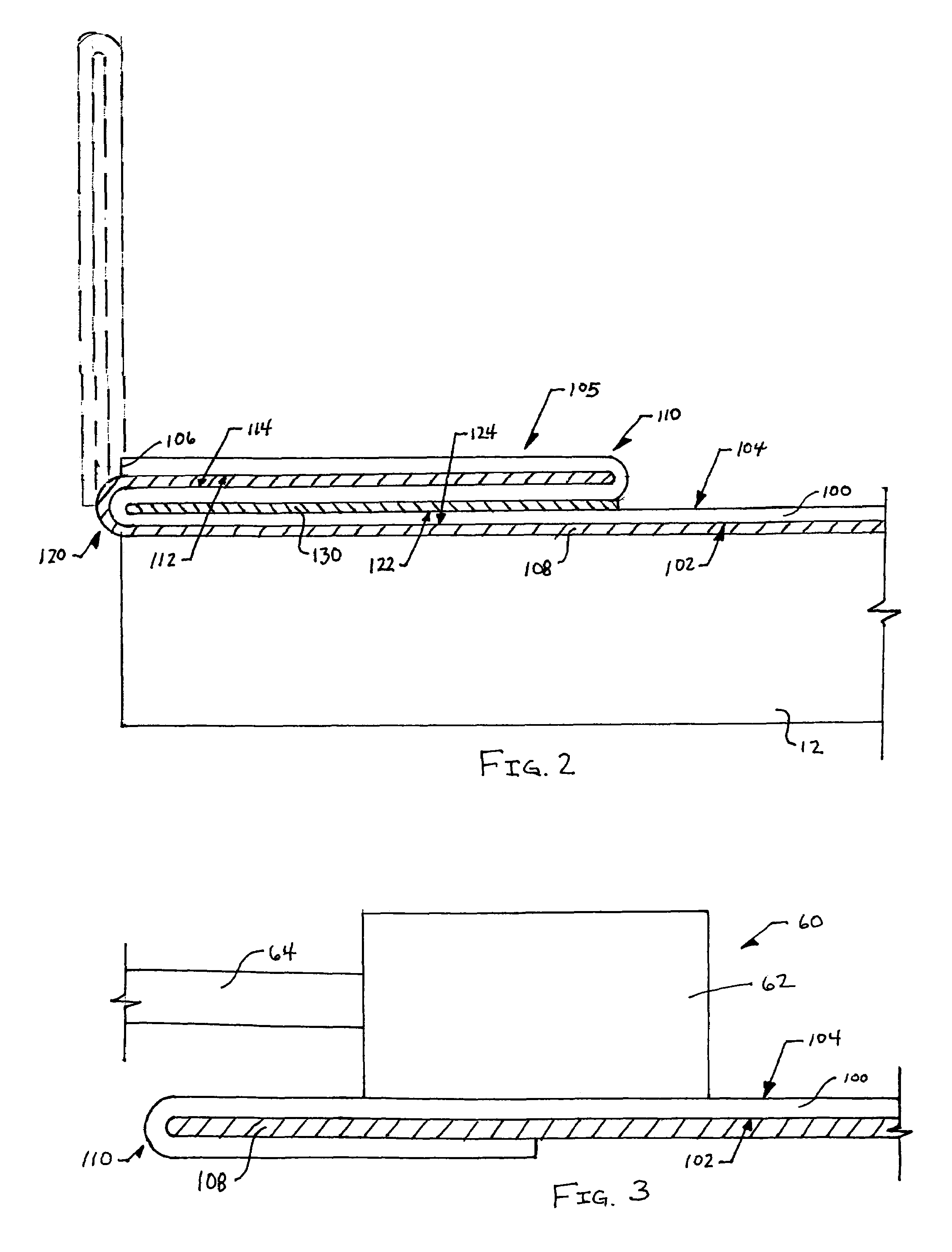Backing sheet, and system and method of fabrication thereof
a technology of backing sheet and backing plate, which is applied in the field of backing sheet, can solve the problems of easy opening and unfolding of the backing plate along the second fold
- Summary
- Abstract
- Description
- Claims
- Application Information
AI Technical Summary
Benefits of technology
Problems solved by technology
Method used
Image
Examples
first embodiment
[0024]FIGS. 1A through 1C depict a system and method of manufacturing a backing sheet according to the present invention. Specifically, FIG. 1A depicts a side schematic view of section of a system 10 used to manufacture a backing sheet 100. This embodiment of the present invention is particularly well suited for manufacturing a backing sheet that can be attached to a sheet of fiberglass material 12 to form fiberglass insulation that is configured for installation between the structural beams within a wall. The method and system of the present invention forms one portion of the manufacturing process used to construct the fiberglass insulation. FIG. 2 depicts is an embodiment of a backing sheet 100 according to the present invention, which can be produced, for example, by the system and method depicted in FIGS. 1A through 1C.
[0025]The system 10 of the first embodiment includes a roller device 20 configured to apply an adherent material 24 to a first side 102 of the backing sheet 100. ...
third embodiment
[0040]the system and method of manufacturing a backing sheet includes a piecing device 70 configured to piece a hole 140 through the backing sheet 100 in order to allow a portion of adherent material in the adherent material layer 108 to leak through the hole 140 and contact a portion of the backing sheet 100. The hole 140 is pierced by punching or cutting a portion of material from the backing sheet 100 to form the hole 140, or by poking a sharp point through the backing sheet 100 without removing any material or only slightly removing some material from the backing sheet 100. The piercing of the hole 140 can be accomplished using a variety of alternative types of piecing devices, one embodiment of which will be described below.
[0041]Preferably the piercing device 70 is located upstream in the system of the roller 26, therefore, as the backing sheet 100 travels over the roller 26, adherent material 24 applied to the first side 102 of the backing sheet 100 will seep or leak through ...
PUM
| Property | Measurement | Unit |
|---|---|---|
| tacky | aaaaa | aaaaa |
| adhesion | aaaaa | aaaaa |
| concentration | aaaaa | aaaaa |
Abstract
Description
Claims
Application Information
 Login to View More
Login to View More - R&D
- Intellectual Property
- Life Sciences
- Materials
- Tech Scout
- Unparalleled Data Quality
- Higher Quality Content
- 60% Fewer Hallucinations
Browse by: Latest US Patents, China's latest patents, Technical Efficacy Thesaurus, Application Domain, Technology Topic, Popular Technical Reports.
© 2025 PatSnap. All rights reserved.Legal|Privacy policy|Modern Slavery Act Transparency Statement|Sitemap|About US| Contact US: help@patsnap.com



